Dipsacus asper
Dipsacus asper
1. The products in our compound library are selected from thousands of unique natural products; 2. It has the characteristics of diverse structure, diverse sources and wide coverage of activities; 3. Provide information on the activity of products from major journals, patents and research reports around the world, providing theoretical direction and research basis for further research and screening; 4. Free combination according to the type, source, target and disease of natural product; 5. The compound powder is placed in a covered tube and then discharged into a 10 x 10 cryostat; 6. Transport in ice pack or dry ice pack. Please store it at -20 °C as soon as possible after receiving the product, and use it as soon as possible after opening.
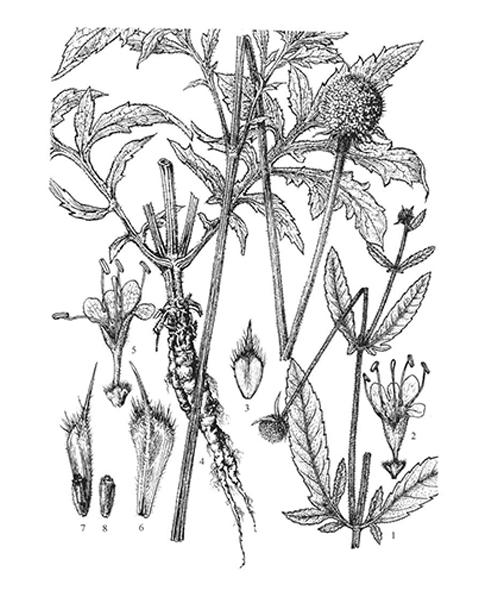
Natural products/compounds from Dipsacus asper
- Cat.No. Product Name CAS Number COA
-
BCN5938
Macranthoidin B136849-88-2
Instructions
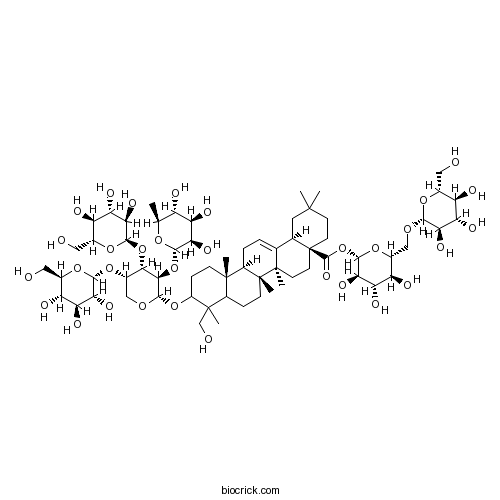
-
BCN2808
Macranthoidin A140360-29-8
Instructions
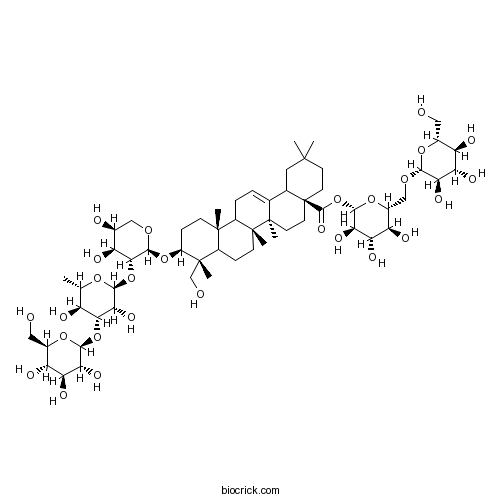
-
BCN1153
Loganin18524-94-2
Instructions
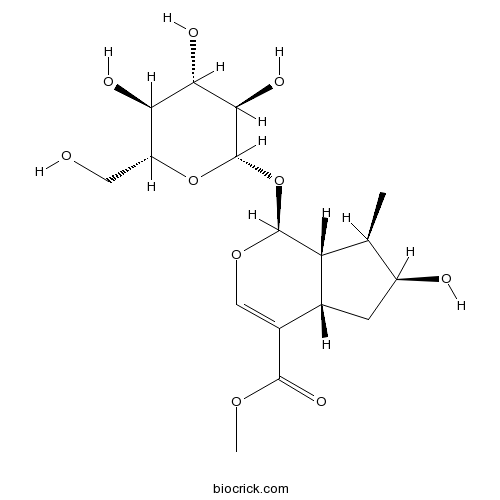
-
BCN5979
Caffeic acid331-39-5
Instructions
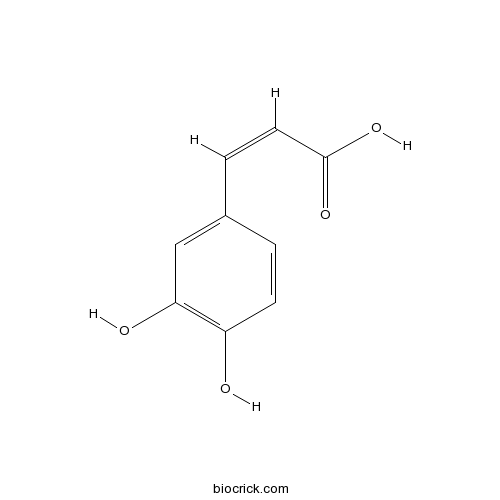
-
BCN1256
Asperosaponin VI39524-08-8
Instructions

-
BCN1423
Hederagenin 28-O-beta-D-glucopyranosyl ester53931-25-2
Instructions

-
BCN2877
Dipsanoside A889678-62-0
Instructions

-
BCN2878
Dipsanoside B889678-64-2
Instructions
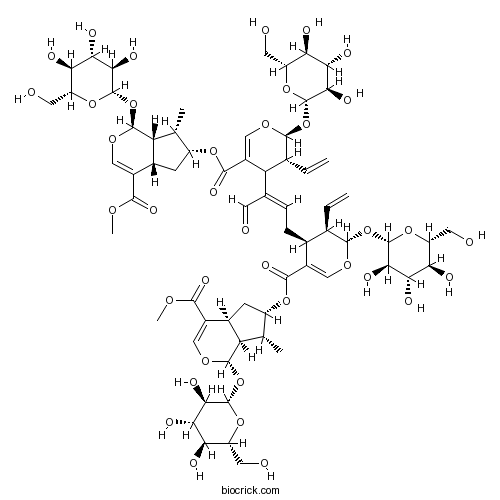
[Analysis on ecological factors and active components content of wild Dipsacus asper in Chongqing Wulong district].[Pubmed: 30111025]
An HPLC method was developed for the determination of iridoid glycosides (loganin acid, loganin, sweroside) and saponins (asperosaponin Ⅵ) in the wild Dipsacus asper. A total of 108 samples consecutive growing 12 month were collected in 9 plots in Wulong district of Chongqing. Subsequent analysis of the content of loganin acid, loganin, sweroside and asperosaponin Ⅵ was performed by HPLC to evaluate the quality. In addition, 20 climate data provided by the world climate database (http://www.worldclim.org/) was analyzed to deduce the correlation between the growing environment factors and the active ingredient content accumulation of D. asperoides and choose the apposite growing environment for D. asper. The range of active ingredient content in wild D. asper were 0.01%-3.80%(loganin acid), 0.08%-0.62%(loganin), 0.12%-0.78%(sweroside), 0.64%-5.26%(asperosaponin Ⅵ). The highest content of these active ingredients was concentrated from February to April, with 2.64% of loganin acid, 0.36% of loganin), 0.57% of sweroside, and 3.09% of asperosaponin Ⅵ. The method used for determination of the active ingredient content in D. asper was simple and convenient with accurate result. The selection of the quadrats is scientific and reasonable and can be used for the analysis of the contents of the wild D. asper, thus provide a reference for quality evaluation of D. asper and protection of D. asper resources.
Akebia saponin D alleviates hepatic steatosis through BNip3 induced mitophagy.[Pubmed: 29609842]
Akebia Saponin D (ASD) is the most abundant constituent of the rhizome of Dipsacus asper Wall. The prior studies have shown that ASD alleviates hepatic steatosis targeted at the modulation of autophagy and exerts hepatoprotective effects through mitochondria. However, it is still unclear which signal transduction pathway that ASD increase autophagy and protect the mitochondria. The purpose of this paper was to explore the mechanisms through which ASD alleviates hepatic steatosis. ASD significantly reduced lipid accumulation in BRL cells. Furthermore, ASD significantly increased the mitophagy acting as increase the colocalization between mitochondria and punctate EGFP-LC3. ASD treatment increased the expression of BNip3, phospho-AMPK, prevented oleic acid (OA) induced LC3-II and phospho-mTOR expression. These effects were similar to the effects cotreatment with rapamycin. ASD treatment could not attenuate the expression of BNip3 blocked by chloroquine (CQ) or siRNA-mediated knockdown of BNip3. These results suggest that Akebia saponin D alleviates hepatic steatosis targeted at BNip3 mediated mitophagy. Activation of BNip3 via ASD may offer a new strategy for treating NAFLD.
Quantitative determination, principal component analysis and discriminant analysis of eight marker compounds in crude and sweated Dipsaci Radix by HPLC-DAD.[Pubmed: 28969478]
Dipsaci Radix is derived from the dry root of Dipsacus asper Wall.ex Henry (Dipsacaceae). It has attracted increasing attention as one of the most popular and precious herbal medicines in clinical use.
Antifungal activity of sterols and dipsacus saponins isolated from Dipsacus asper roots against phytopathogenic fungi.[Pubmed: 28911735]
The in vivo antifungal activity of crude extracts of Dipsacus asper roots was evaluated against the phytopathogenic fungi Botrytis cinerea, Colletotrichum coccodes, Blumeria graminis f. sp. hordei, Magnaporthe grisea, Phytophthora infestans, Puccinia recondita and Rhizoctonia solani using a whole-plant assay method. Ethyl acetate and acetone extracts, at 1000μg/mL, suppressed the development of tomato gray mold (TGM) and tomato late blight (TLB) by 90%. Through bioassay-guided isolation, five antifungal substances were isolated from the D. asper roots and identified as β-sitosterol (1), campesterol (2), stigmasterol (3), cauloside A (4) and a novel dipsacus saponin, named colchiside (3-O-β-d-xylopyranosyl-23-O-β-d-glucopyranosyl-28-O-β-d-(6-O-acetyl)-glucopyranosyl hederagenin) (5). Of those, cauloside A (4) displayed the greatest antifungal efficacy against rice blast, TGM and TLB. Colchiside (5) moderately suppressed the development of TLB, but exhibited little effect against the other diseases. The synergistic effects of the isolated compounds against TLB were also assessed. Synergistic and additive interactions were observed between several of the sterol compounds. This study indicated that the crude extracts of, and bioactive substances from, the roots of D. asper suppress TGM and TLB. In addition, cauloside A (4) and colchiside (5) could be used as antifungal lead compounds.
Integrating UHPLC-MS/MS quantification and DAS analysis to investigate the effects of wine-processing on the tissue distributions of bioactive constituents of herbs in rats: Exemplarily shown for Dipsacus asper.[Pubmed: 28467948]
None
UHPLC-MS/MS quantification combined with chemometrics for the comparative analysis of different batches of raw and wine-processed Dipsacus asper.[Pubmed: 28218445]
A rapid and sensitive ultra-high performance liquid chromatography with tandem mass spectrometry approach was established for the simultaneous determination of 4-caffeoylquinic acid, loganic acid, chlorogenic acid, loganin, 3,5-dicaffeoylquinic acid, dipsacoside B, asperosaponin VI, and sweroside in raw and wine-processed Dipsacus asper. Chloramphenicol and glycyrrhetinic acid were employed as internal standards. The proposed approach was fully validated in terms of linearity, sensitivity, precision, repeatability as well as recovery. Intra- and interassay variability for all analytes were 2.8-4.9 and 1.7-4.8%, respectively. The standard addition method determined recovery rates for each analytes (96.8-104.6%). In addition, the developed approach was applied to 20 batches of raw and wine-processed samples of Dipsacus asper. Principle component analysis and partial least squares-discriminate analysis revealed a clear separation between the raw group and wine-processed group. After wine-processing, the contents of loganic acid, chlorogenic acid, dipsacoside B, and asperosaponin VI were upregulated, while the contents of 3,5-dicaffeoylquinic acid, 4-caffeoylquinic acid, loganin, and sweroside were downregulated. Our results demonstrated that ultra-high performance liquid chromatography with tandem mass spectrometry quantification combined with chemometrics is a viable method for quality evaluation of the raw Dipsacus asper and its wine-processed products.
Global and untargeted metabolomics evidence of the protective effect of different extracts of Dipsacus asper Wall. ex C.B. Clarke on estrogen deficiency after ovariectomia in rats.[Pubmed: 28132861]
Dipsacus asper Wall. ex C.B. Clarke (DA) is an effectively traditional Chinese medicine for treating osteoporosis and bone fracture. Until now, studies on pharmacological mechanism of DA mostly centered on cell and gene level, little is known about its metabolic signatures. The aim of this study is to investigate the anti-osteoporosis effects of crude and wine-processed DA by global and untargeted metabolic profiling of rats serum, liver and kidney derived from sham, model and treated groups.


